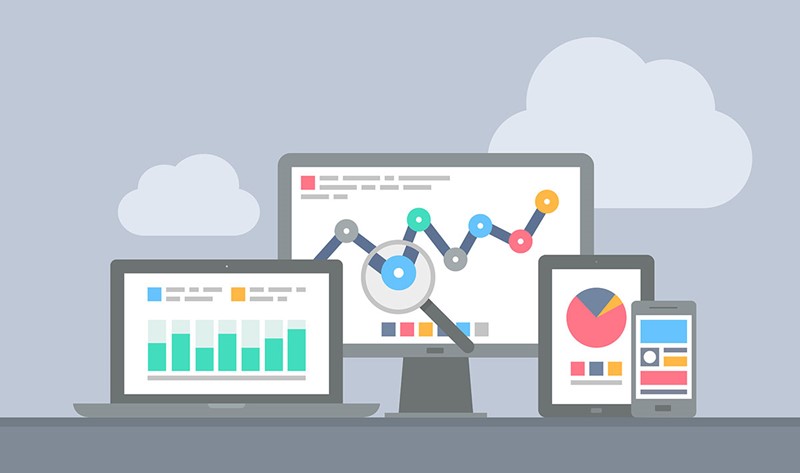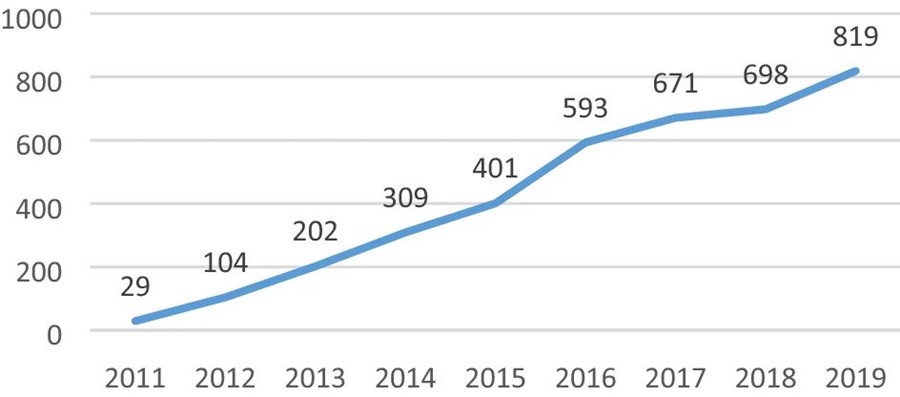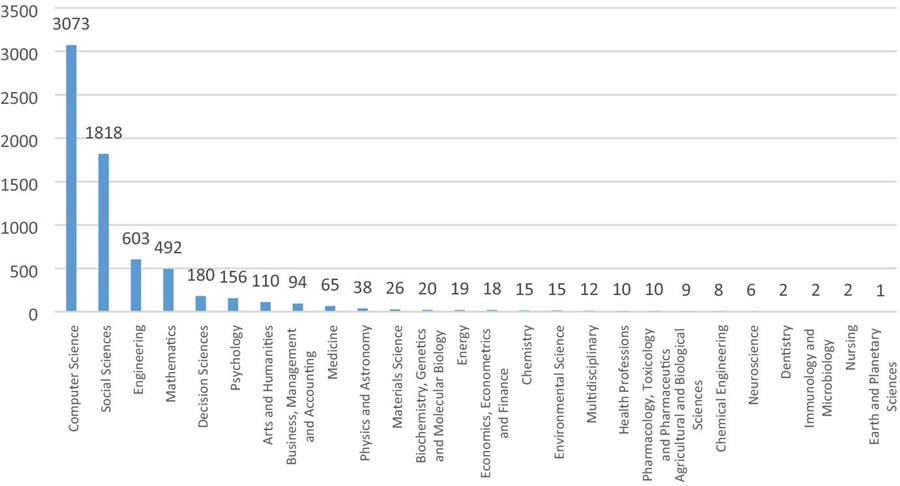What’s in 2025: Learning Analytics In A Nutshell
According to a report by EDUCAUSE, Learning Analytics is one of the digital technologies expected to enter mainstream use in the near future and become a lucrative investment. As the speed of digitalization is aggressively accelerated by COVID-19, maybe today is the right time we read about Learning Analytics!
1. What is Learning Analytics?
“Learning analytics is the measurement, collection, analysis and reporting of data about learners and their contexts, for purposes of understanding and optimizing learning and the environments in which it occurs. The growth of online learning since the 1990s, particularly in higher education, has contributed to the advancement of Learning Analytics as student data can be captured and made available for analysis. When learners use an LMS, social media, or similar online tools, their clicks, navigation patterns, time on task, social networks, information flow, and concept development through discussions can be tracked. The rapid development of massive open online courses (MOOCs) offers additional data for researchers to evaluate teaching and learning in online environments.” – Wikipedia.com
Generally speaking, Learning Analytics refers to the collection and analysis of data about learners and their environments for the purpose of understanding and improving learning outcomes. It is where big data meets traditional quantitative methods in education. Governments, universities, testing organizations, and massive open online course providers are collecting data about learners and how they learn. All that data, however, has been mostly untapped until the fairly recent development of the methods and tools to do so.
2. The Influence Of Learning Analytics
Learning Analytics can influence and be applied wherever there is a learning activity: in business activities, in schools and all academic institutions, or even individuals looking to learn from home. Some key customers of Learning Analytics are governments, testing organizations, businesses (for Learning and Development objectives), offline academic institutions and online course providers. However, in this article, we will zoom in on only Learning Analytics for academic purposes.
3. Usage of Learning Analytics

Learning Analytics is very important in Higher Education
One of the driving forces behind the growth in the Learning Analytics field is that educational institutions are now facing the challenge of limited resources and increased accountability, which are propelling creativity and discovery.
Therefore, the analytics programs that were once reserved for big businesses are now being widely used in higher education and K-12 institutions to measure student growth, inform curriculum decisions, and identify students at risk for failing a course or program.
In addition to these practical uses of Learning Analytics, the practice is often used to:
- Measure key indicators of student performance.
- Support student development.
- Understand and improve the effectiveness of teaching practices.
- Inform institutional decisions and strategy.
4. Key Benefits
1. Benefits To Students
Analytics related to online education programs have the potential to provide students with more detailed information about their performance. For instance, Learning Analytics can help students see and reflect on their behavior in constructive ways to help them manage their progress toward their learning goals.
Similar to a “Fitbit” or an “Apple Watch,” a student-directed analytics framework has the potential to help students monitor their behavioral patterns, track changes over time, and compare their progress toward learning goals against both absolute and normative standards based on peer data.
A student with access to strong Learning Analytics data should be able to ask and answer:
- What am I doing?
- How am I doing relative to my own expectations?
- How am I doing relative to faculty expectations?
- How am I doing relative to my peers?
2. Benefits To Instructors
By utilizing Learning Analytics data, faculty can better monitor students and understand how course resources are being used. Some of the more obvious questions instructors ask and may find answers to via analytics include:
- How are students doing in my class? Are any at risk?
- What resources are they using the most?
- Who is using the resources I’ve made available to help them?
These are common applications of simple analytics and tracking systems often embedded in Learning Analytics systems. Analytics may also help answer less obvious questions such as: How does variation in the use of course resources impact learning outcomes?
This is a complicated question to be solved, as it requires not only that the tracking systems monitor student resource utilization, but that it be connected with learning outcomes data, such as grades. If variation in the use of certain learning resources are not associated with expected learning outcomes, perhaps we need to reconsider the use of such resources.
Analytics will allow instructors to reflect on their own performance and seek better evidence for guiding instructional improvement.
3. Benefits To Administrators

Designing a better LMS through the use of Learning Analytics
Learning Analytics allows program directors, or other administrators, to more easily see how well their program is performing. In addition to the potential need to drill down into specific faculty, students, and course-level data, Learning Analytics can allow for meaningful comparisons across courses.
Learning Analytics can help administrators answer questions such as:
- Which courses are students finding the most engaging?
- Where are “hot spots” that need attention where learning outcomes are weak or engagement is low?
- Are there student characteristics or engagement patterns that are associated with program retention?
Some of these are tricky, and like other questions raised, may require that different systems talk to each other to be able to answer important questions.
4. Benefits To Learning System providers
As analytics advance, learning system providers will also benefit from this data. Analytics can inform these providers (i.e businesses) on how individuals are interacting with their systems, how that interaction impacts a host of other outcomes, and how to change the environment in response to those impacts for higher earnings.
Businesses also routinely use data mining approaches and experimentation with their own systems to improve the user experience. Facebook, Google, Amazon, and others continually experiment with subtle and not so subtle changes to the functionality and design of their products and examine the impact of those changes on user behavior.
Invent, build, integrate, scale and upgrade your Software Development service with Savvycom! Since 2009, Savvycom has been harnessing digital technologies for the benefit of businesses, mid and large enterprises, and startups across the variety of industries. We can help you to build high-quality software solutions and products as well as deliver a wide range of related professional services.
5. Benefits To Researchers
Learning Analytics provides new approaches to answering fundamental questions about factors associated with learning outcomes, especially as analytic approaches are able to examine micro and macro patterns of student and instructor behavior and their relationships with desired learning outcomes.
Studies in online learning often make generalizations, not taking into consideration factors such as content, student populations, and disciplinary conventions. Large-scale learning analytic approaches have the potential to better investigate the influence of multiple variables on key learning outcomes, as well as complex interactions among those variables, to provide increasingly nuanced views of how online environments influence learning.
5. The Benefits of Incorporating Learning Analytics Into LMS
To maximise the benefits of learning analytics here are our customer top 3 features to watch out for:
1. Improving the quality of teaching
Analytics have been used to improve teaching – the value of dashboards for enhancing teaching or future course provision is a key factor in learning analytics. Learning analytics can furnish teaching staff with better information on the quality of the educational content and activities they are providing, and on their teaching and assessment processes, to enable its continual enhancement.
Obtaining better data on the student experience potentially enables an institution to identify and address issues of concern to learners such as inadequate feedback. Analytics can be used by lecturers and tutors to monitor the performance of their students while the module is taking place; they can then adapt their teaching if, for example, they identify that students are struggling
2. Boosting Retention
A better understanding of data about learners and their learning can help universities to tackle high attrition rates, which results in adverse impacts on the lives of those affected, and wasted expense for the institutions. Student data analytics can be used to predict which students will not progress to the next academic year. Analytics have had a positive impact on retention. Once an at-risk student has been identified, personalised interventions such as advice or support from a tutor can then be taken to help to try and retain those students.
3. Enabling students to take control
Giving students better information on how they are progressing and what they need to do to meet their educational goals is another important application of learning analytics. Learning analytics can provide students with the opportunity to take control of their own learning, give them a better idea of their current performance in realtime and help them to make informed choices about what to study
6. Learning Analytics – Market Trend
1. Acquisition Of Attention
Learning Analytics is gradually gaining attention. By searching for article-type studies from the SCOPUS database using the keyword “Learning Analytics” or “Learning Analytics,” it was found that the number of publications has increased at a fast pace since 2011, showing the rapid growth of techniques, methods and applications of Learning Analytics.

Number of studies on Learning Analytics published in the SCOPUS database
Driven by the digitalization trend of COVID-19, these statistics are promised to grow further by the end of 2020 reporting period and even beyond.
2. Key Application Domains
According to a study, Learning Analytics are closely related to educational technologies, techniques in Computer Science and Decision Science. Thus, the top application domain is Computer Science and there are over a hundred studies in Decision Sciences.
It is also shown that Learning Analytics has been applied to a variety of other subjects, such as Social Sciences, Engineering, Mathematics, Psychology, Arts and Humanities, Nursing, Business, Management and Accounting, as well as Medicine.

Number of studies on Learning Analytics for individual application domains
7. Room For Growth
1. Early Intervention
Learning Analytics can be used to deliver early intervention, which investigates those students who are likely to fail in their studies and provide them with just-in-time and personalized support.
While intervention was claimed to be the biggest challenge in Learning Analytics, only few innovations have addressed this issue. Further innovations in this area shall aim at offering information as personalized recommendations and visualizations of learning data. Those activities will increase students’ study performance, offer personalized feedback and improve student retention.
2. Self-regulated Learning
Self-regulated learning includes setting the learning plan and goals, and then requires the students to regulate and evaluate the learning process independently. Despite being a critical dimension for education (especially online courses providers), it remains a tough problem to solve. This is where Learning Analytics jumps in to help research and drive better solutions.
For example, Learning Analytics can be used to evaluate how the three aspects of Self-regulated learning – namely learning motivation, learning management, and self-assessment – are affected according to different characteristics of the students. Strengths and weaknesses of the proposed methods are then identified, which provide insights for other researchers and education practitioners to promote students’ self-regulated learning.
3. E-Learning
E-learning is and will obviously become a trend in The New Normal, however, not everything about the current E-learning platform is perfect. A lot of problems about remote learning have been identified as more students engage in E-learning during COVID-19: slow communication between students and teachers, no extracurriculars…Hence, more innovative approach to content creation and technical design in E-learning should be put in practice. These can be helped by Learning Analytics.
Our recommendation: You can design a recommender system model based on learners’ ratings and content-based filtering, and shows how to enhance students’ learning performance by suitable guiding in the e-learning platform, by students’ involvement into the creation of study material and participation in the selection of the appropriate e-study material via students’ instructor and system-generated ratings.
What Makes A Great Learning Analytics System?
To make Learning Analytics happen, skilled data analysts are needed to support these analytics-driven initiatives and bring about institutional success.
In addition, any Learning Analytics initiative should be complemented by strong communication between the analyst and educators in order to successfully leverage the insights gleaned by the effort.
“To build a successful Learning Analytics program at an educational institution, it’s important to engage and inform school leaders, listen to the needs of teachers and students, and educate users on how to consume and act on the data that’s presented.
Teachers and administrators will only be committed to data-driven decision making if they can see its value and are educated about how to turn insights gleaned from data into action”
Savvycom is proud to be one of the best data miners and skilled software development company within Vietnam IT industry. After 11 years serving effective software solutions for over 120 clients, having received 100+ of feedback on excellent communication and agility, we guarantee the quality of our Learning Analytics software system.
GET YOUR FREE CONSULTATION
Or contact us via:
- Phone: +84 24 3202 9222
- Hotline: +1 408 663 8600 (US); +612 8006 1349 (AUS); +84 32 675 2886 (VN)
- Email: [email protected]


